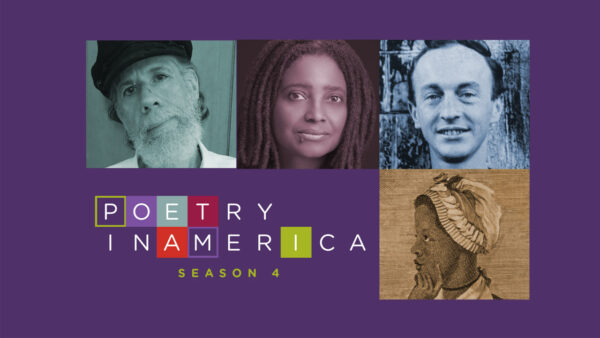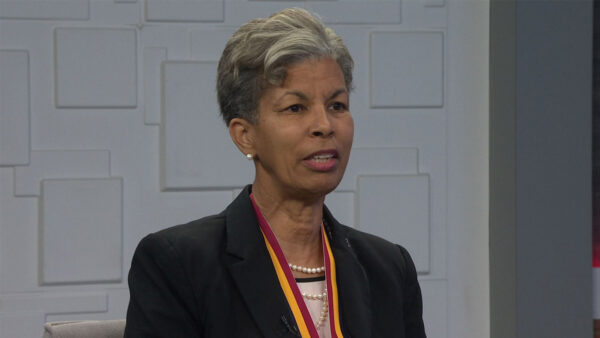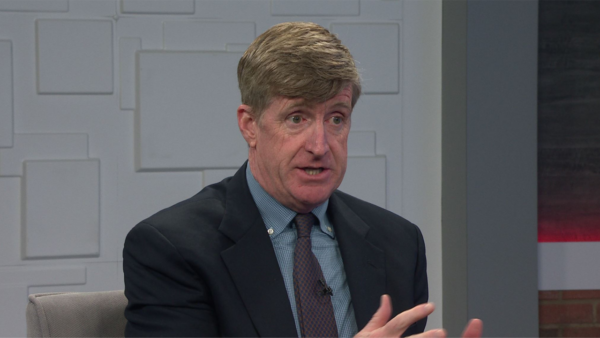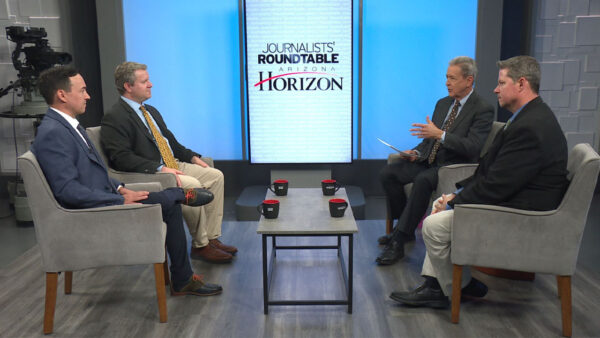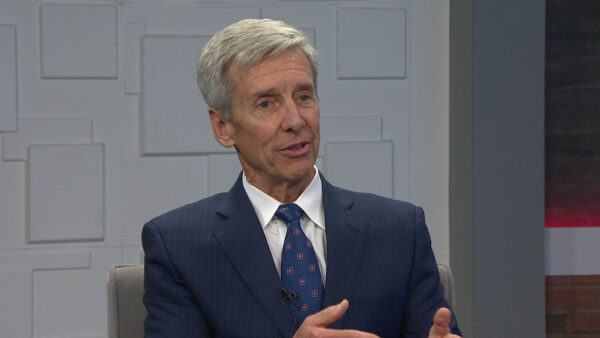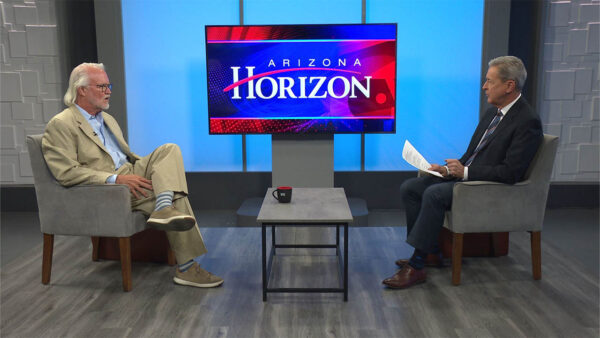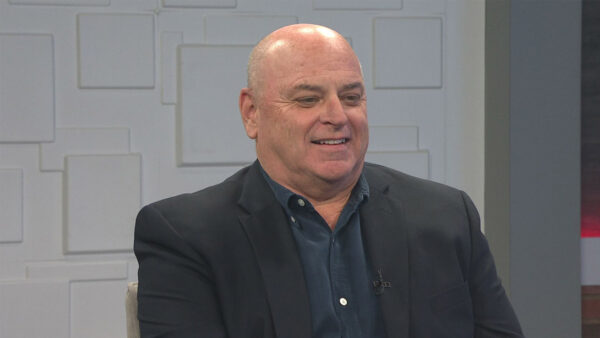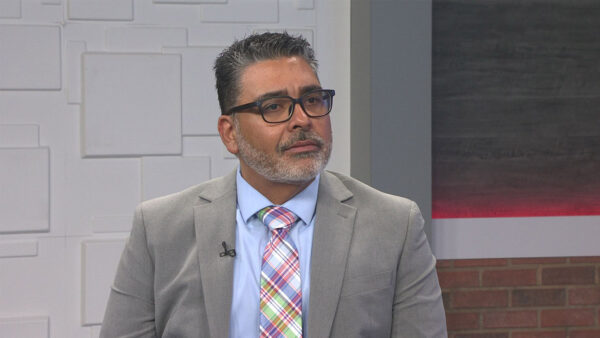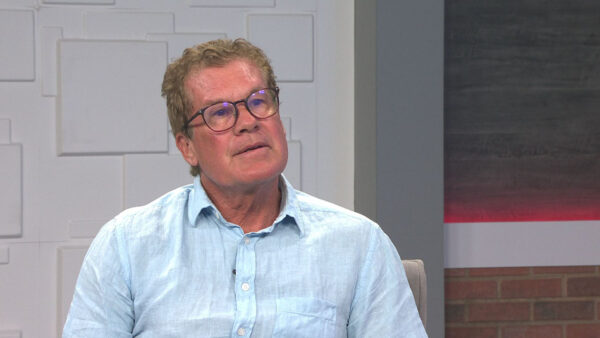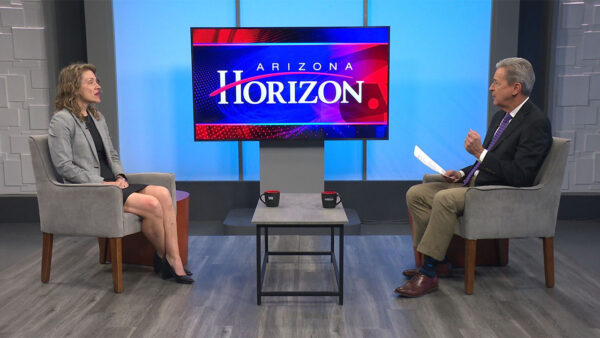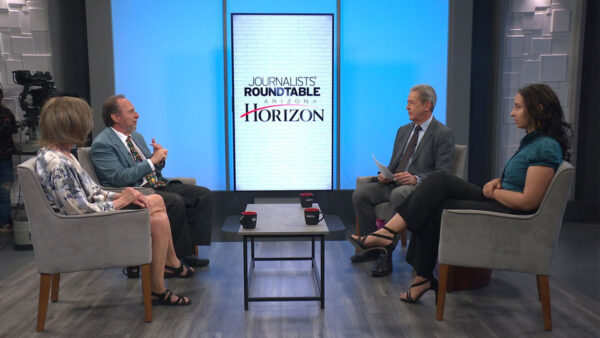A review of some of the 2009 Valley Forward Environmental Excellence Award winners with Valley Forward President, Diane Brossart and Jay Hicks, a landscape architect and planner who served as lead judge for the competition.
Ted Simons: Metro light rail is the big winner in this year's Valley Forward Environmental Excellence Awards. At a ceremony this weekend, metro light rail won the President's Award for its contribution to the valley's liveability and sustainability. Here now to talk about that particular honor, and other award winners, are Diane Brossart, president of the Valley Forward Association, and Jay Hicks, a landscape architect and planner who served as lead judge for this year's competition. Thank you both for joining us on "Horizon."
Both: Thank you.
Ted Simons: What was the purpose behind the awards?
Diane Brossart: They set standards for the liveability and sustainability of the valley in various categories from buildings and structures to site development and landscape. Technology. Art, education, and sort of sets a bar for what we should be doing and what is going to contribute to the longevity of our community and make it vibrant.
Ted Simons: And who and/or what was eligible?
Jay Hicks: Virtually everything in site design in buildings, but also went all the way to technology also. We saw cutting-edge technology. And solar field -- the ASU solar field was part of that. Even down to bio-processors, down to new technology-- it's not just about buildings and structures and site design but it's all-encompassing.
Ted Simons: And excellence is defined as the idea excellence, pulling it off excellence, or a little bit of both?
Diane Brossart: You'd like to think a little bit of both. But really, this is probably the only competition of its kind that focuses on environmental excellence. What are the attributes that contribute to a healthier environment?
Ted Simons: Let's get to the winners here. We saw a little bit of light rail. The system got the top prize. Why?
Jay Hicks: Mainly because, one, the achievement of putting that much rail together at one time. 22 miles of rail opened up. To getting the jurisdictions to think regionally this time, rather than city by city, they looked at regions. It worked out well.
Ted Simons: It looks appealing. That's a nice shot. Looks like something that had forethought as far as design is concerned. Big factor?
Diane Brossart: It is. One of the things, historically, the marriage between land use planning and transportation. Light rail is a good example, where you have three communities linked. The benefits not just from moving people and the mobility issues, but the land development that occurs around the light rail stations and by the way, they're exceeding projections on ridership already, so it's very exciting.
Ted Simons: Tempe Transportation Center was a double winner. Talk to us about that particular structure and why what we're looking at was honored.
Jay Hicks: It was definitely cutting edge, but LEED platinum, which is the top honors on LEED. Which is basically an environmental excellence from the standpoint of systems and how it's constructed and reusable materials. What's unique about it is it has a green roof.
Diane Brossart: There's the roof.
Jay Hicks: But it's a living green roof that offsets the heat island effect.
Ted Simons: Yeah, this is fantastic stuff. Right in the heart of Tempe.
Diane Brossart: Everything from the signage to the artwork which is all recycled materials is a benefit to the environment.
Ted Simons: What is Crescordia?
Diane Brossart: It's a Greek term. It means to grow in harmony.
Ted Simons: So that's why the Crescordia awards.
Diane Brossart: This is our 29th annual and SRP has been partnering with us. This is the eighth consecutive year. We had 600 people at the banquet on Saturday night. Where were you, Ted?
Ted Simons: We won't get into that. Maybe I was at Hanny's. Another award winner. Why Hanny's?
Jay Hicks: Historic preservation. Rather than tear down, you basically retrofit. It was a preservation of that project and the interior, if you haven't been in the interior yet, I understand you have been, it's fantastic how they kept the modern decor and done in conjunction with the city of Phoenix historic preservation office.
Ted Simons: Can we put Hanny's picture back up? That building has such a design to it. It's almost DECO-like and to think that was -- look at that. To think it was a clothing store and nothing more and the city had the wherewithal to say let's not tear it down for a change.
Diane Brossart: That's the best kind of recycling. When you take old buildings and redo them and maintain that integrity of the city and they kept the name. Which I really like.
Ted Simons: SUNDT Headquarters in Tempe wins for energy saving features. What's that about?
Diane Brossart: That's another LEED certified project. That's I believe a silver LEED.
Jay Hicks: Silver maybe gold. It was designed on building integration, basically modeling. They actually modeled the entire building before it was built. So they know how it's going to perform and what materials and cost effective and a great design.
Ted Simons: The fact it looks good means a lot. You can do LEED certified and have it look like a mud hut, but if you have that, that's pretty important.
Diane Brossart: LEED is becoming the standard in the building community. More and more. And those platforms are across the board.
Ted Simons: The gateway to McDowell Sonoran preserve was recognized as well for revegetation. Talk to us about this.
Jay Hicks: The way it actually fit the landscape. The idea of this project, it fit into the landscape without really disrupting it. The designers did an excellent job. You basically, as you see by the photographs, everything about it blends into the background. It doesn't dominate and just is a great entry feature, probably the primary entry feature coming into the preserve itself.
Ted Simons: Just beautiful. That's out there. McDowell mountain.
Jay Hicks: Yes.
Ted Simons: Downtown Phoenix, Civic space park was honored as well. Talk to us about that.
Diane Brossart: That's such a landmark signature project right in the heart of the city and we've been advocates of parks and open space, and when you see it in an urban setting, it's even more exciting, it draws people in. And the artwork is by nationally known artists.
Jay Hicks: It's right in the heart of downtown. It came on the heels of Patriot Park. Sandwiched between the old post office which would be the new student union for ASU and it's an urban space, and go down during the evening. It's unbelievable. The lighting. And Janet Eckelman did the sculpture in the center, it's an icon netting structure.
Ted Simons: Civic space park was recognized for a mix of storefronts and gathering spaces. Talk to us about that.
Jay Hicks: Sure. There was a primary building, called the Motor Company Building, one of the original car dealerships in downtown Phoenix, and on the south end, the first -- I think it's called the Phoenix union student building. That's for private use. This is the gathering space for the community and it's about spaces and gathering and having events and drawing people downtown.
Ted Simons: And the big artwork. It's called "her secret is patience," and this won a big award.
Diane Brossart: It won a Crescordia in the art category. That's at night. It lights up and makes such a major statement and really changes the whole area. It's iconic. And it's named for a desert cactus that blooms slowly -- her secret is patience.
Ted Simons: There has been some criticism about this particular piece of art. How much -- it was a bit of a lightning rod effect, the determination to honor and award it. Sometimes art doesn't have to be happy-feely. Sometimes are makes you think and sometimes people don't like it.
Diane Brossart: And art is subjective. You either like it or don't like it. Art tends to be one of the more controversial categories. Think about the Squaw Peak Parkway.
Jay Hicks: The contrast, this is really an environmental piece. It relates back to our desert and changes -- the lighting will actually change over the seasons, so you see what you see now will not be the same what you'll see this winter. That will change. And plus it moves in the wind.
Ted Simons: That was the question. What was going to happen once the monsoon came.
Jay Hicks: It's ingenious the way it's built.
Ted Simons: We had an easy monsoon, but you say it's going to be ok?
Jay Hicks: Everything is fine. It's quite the structure.
Diane Brossart: The artist is inspired. She wrote she was inspired by our monsoons to develop this art piece. So it's kind of -- it's 100 feet above the ground. It's a big -- you haven't been there, you have to.
Ted Simons: It's impressive to see. ASU's Tempe campus was recognized for a solarization project. Talk to us about that.
Jay Hicks: Sure. What I understand right now is the project in place we gave the award for is only the beginning. They're looking to generate basically a megawatt of energy coming off this site. It's going to be a large scale site and the idea is it will take over the whole campus as far as being carbon neutral.
Diane Brossart: They have more solar there than any university in the country, is what they say. And ASU is really becoming the sustainability example for universities around the country.
Ted Simons: And people walking around the campus can see these mostly on top of parking garages and they're not obtrusive and apparently getting some kind of job done.
Diane Brossart: Very exciting.
Ted Simons: This man not be the most exciting photograph of the evening. There's an organic refuse conversion process that was honored as well. This isn't too thrilling a shot, It did win an award. Talk about the process.
Jay Hicks: The owner was thrilled. Absolutely thrilled. One of those little secrets. This really is the technology and rather than the waste going into garbage, this machine can actually -- I call it digest it. So it doesn't end up in the landfills and the byproduct can be a fertilizer--
Diane Brossart: Up to 2400 pounds of compost a day. That's a lot. The applications, we don't know what the applications can be but it's an innovative new technology we wanted to spotlight because it is environmental and has great potential.
Ted Simons: One last one here. Phoenix environmentally purchase program. What are we talking about here?
Diane Brossart: The SRP award. The environmental stewardship award. They won for the processes they put in place to ensure that the fifth largest city in the nation was going to use and purchase services that would benefit the environment. A very good example.
Jay Hicks: And you're seeing it beyond what I call bricks and mortar. What LEED and sustainability is all about, what you purchase, how you use it and how you dispose of it. And Phoenix has taken such a leap in terms of streamlining it. So they know what they buy and where it will end up.
Ted Simons: Do the awards build momentum or do you go year to year and say some years pretty hot and others not so?
Diane Brossart: This was sizzling hot this year. We've had more entries than ever in the history of the competition of over 150 entries which is significant and it's inspiring and I think the people that were there for the presentation were very inspired because we tend to be talking about the economy and all of the negative things that go along with that, and now you can see some projects that are in the ground that are really helping to change our region.
Ted Simons: As a landscape architect who works on commercial projects, the economy a factor in your business, I would think.
Jay Hicks: Yes.
Ted Simons: Where do we go from here? Do people pull back as bold a design as we see here tonight or --
Jay Hicks: It's interesting with all the sustainability going on, it's doing more with less and that was really what was shown this last Saturday. It wasn't about excess. It wasn't about expensive designs. It was about doing things very smart. I think that's the way we're going the next three years, five years. It's going to be the next level of sustainability where whatever you do is not just good for the environment. It actually gives back. It restores, enhances and basically repairs.
Ted Simons: Are you seeing that as well? A step forward here. A way to keep momentum here.
Diane Brossart: Absolutely. Our theme is healthy environment and healthy economy. The two go hand in hand.
Ted Simons: I can think of a few buildings I would like to see restored as well and perhaps next year, we'll have you back and we'll show those too.
Both: Thank you.
Diane Brossart:Valley Forward President;Jay Hicks:Landscape architect and planner;


